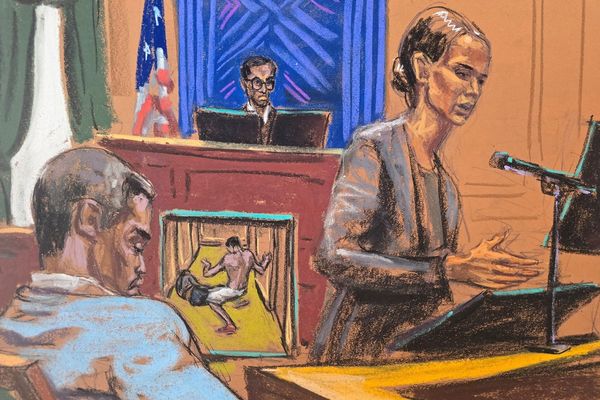As Natarajan Chandrasekaran prepares to lead the vast, multi-business Tata group, the burden of management history weighs heavily against him. He takes over as the new head of a family business, a period of transition when groups are known to struggle not just in India but across the world. Indeed, so high is the stress at such a time that survival itself isn’t always guaranteed for most.
According to the US-based consulting firm Family Business Institute, only 30% of family businesses last into a second generation and a mere 3% into the fourth generation or beyond.
Additionally, the Tata group is a conglomerate, a kind of business structure that is rapidly becoming extinct. In developed Western markets, following years of underperformance, conglomerates went out in the 1980s after being quite the rage in the US and Europe for decades before that.
They gave way to companies focused on single businesses as these were seen creating greater value for their shareholders.
The late Harold Geneen, president of ITT Corp., was the original conglomerate champion.
In the Geneen scheme of things adherence to pre-set financial targets lay at the heart of a conglomerate’s success. But Geneen’s ideas came to naught as his company was eventually bought over by property company Starwood Lodging Trust in 1997 for less than $10 billion. Other multi-business groups like the scandal-dogged Tyco International and Fortune Brands too have faded out over the years.
There are a few that have survived, including the Hong Kong-based Jardine Matheson, the South Korean Doosan Corp. and Mitsubishi group in Japan. The most famous of the conglomerates with businesses ranging from clocks to financial services has been GE. Under its mercurial former chairman Jack Welch, it was, at one time, the world’s most valuable company. Yet, Welch who took over in 1981 spent the first two years of his tenure slashing the number of GE business units from about 150 to 15. His successor and present chairman Jeffrey Immelt has spent a lot of his energies transforming GE into a digital industrial company, along the way shedding its large but unprofitable financial services business.
That’s broadly the task that lies ahead for Chandrasekaran, a professional manager who has risen from the ranks of TCS and bears little resemblance to any of the previous incumbents who have headed the 148-year old group. Clearly, he can’t play the kind of hands-on role he did while managing Tata Consultancy Services Ltd (TCS).
The sheer complexity of the different businesses as well as the unique dynamic that drives each would mean getting too close to any of them will be a recipe for disaster. What he definitely needs to do is to hone in on a common core that unites the seemingly diverse parts and based on that, relook the group’s portfolio of businesses, taking the axe to those that don’t fit into that core. Already Ratan Tata, chairman emeritus of Tata Sons, has indicated he may not be opposed to a rethink on the Nano car.
The problem with being the new boss of a sprawling conglomerate like the Tata group is that you are damned if you do and damned if you don’t. If you have had a predecessor running the businesses for nearly 20 years, there will be decisions you have to take that will seem opposed to those that the man you have succeeded took during his tenure. It would be the same even in a focused company but in a sprawl such as this, the issues get knottier.
What Chandrasekaran needs is some selective amnesia. He needs to forget his past, forget who he was and claim the new job as his by right. Effective heads of large conglomerates, particularly when they are from the controlling family, play the role of the entrepreneur capable of taking risks and exploring new areas. Ratan Tata did that, for instance, when he conceived of a sub-one lakh rupee car for the Indian market. Whatever its eventual fate, the Nano was an outrageous punt. Chandrasekaran, a professional manager, is unlikely to have made such a bet in TCS whose success owed much to his razor sharp focus on the bottom line. As chairman of Tata Sons, however, that may not always be the best course.
As Richard Branson, who has incubated businesses as diverse as airlines and space tourism said, “I can honestly say that I have never gone into any business purely to make money. If that is the sole motive, then I believe you are better off not doing it. A business has to be involving, it has to be fun, and it has to exercise your creative instincts.”
At the same time, Chandrasekaran will also need to realize the two major drivers of conglomerate value—the synergies that can be leveraged among group companies and the hedge businesses at different levels of performance and growth bring to each other. The best of the multi-business companies fail to do that. GE started centralizing the back-office functions of its various businesses just about five years ago.
If Chandrasekaran can pull this off, bringing stability to the group while restoring profitability and growth, it will be proof that professionals are the best bets to head family businesses. Just for that, he will have a dozen Indian business patriarchs watching him keenly.
Sundeep Khanna is a consulting editor at Mint and oversees the newsroom’s corporate coverage. The Corporate Outsider will look at current issues and trends in the corporate sector every week.
Click here to read more from The Corporate Outsider.







